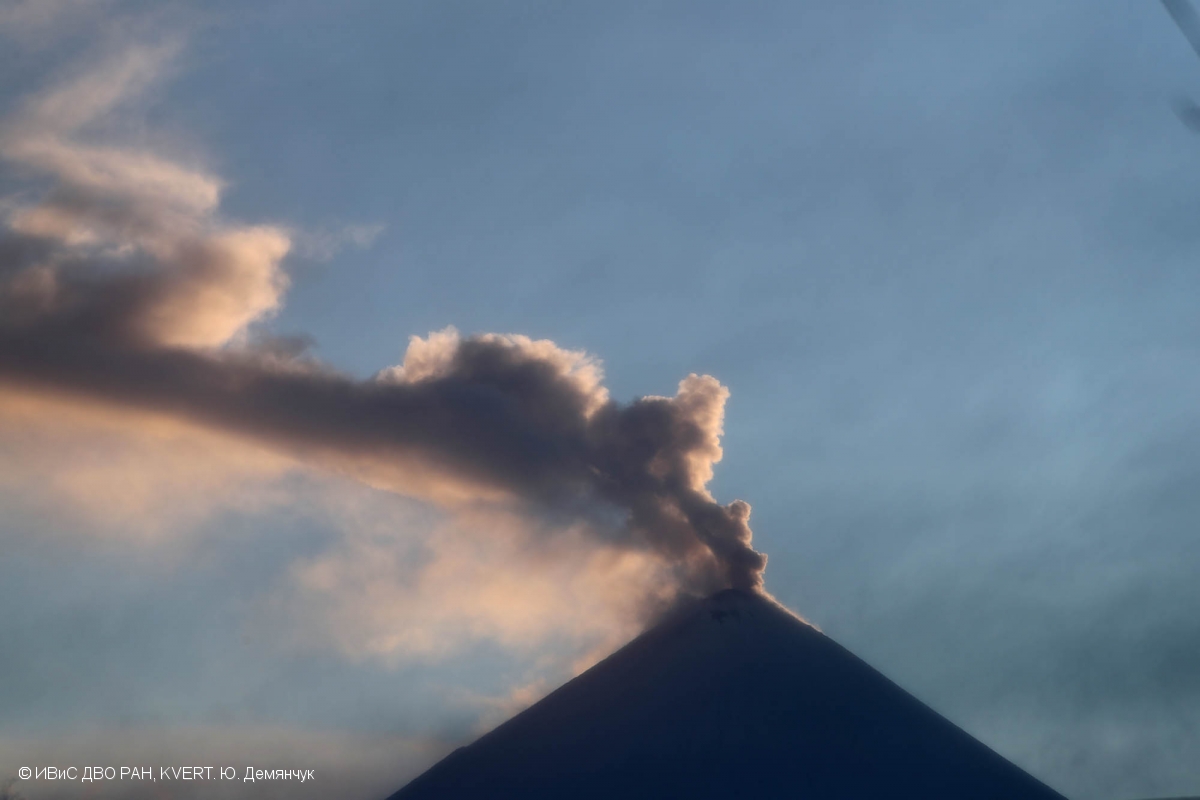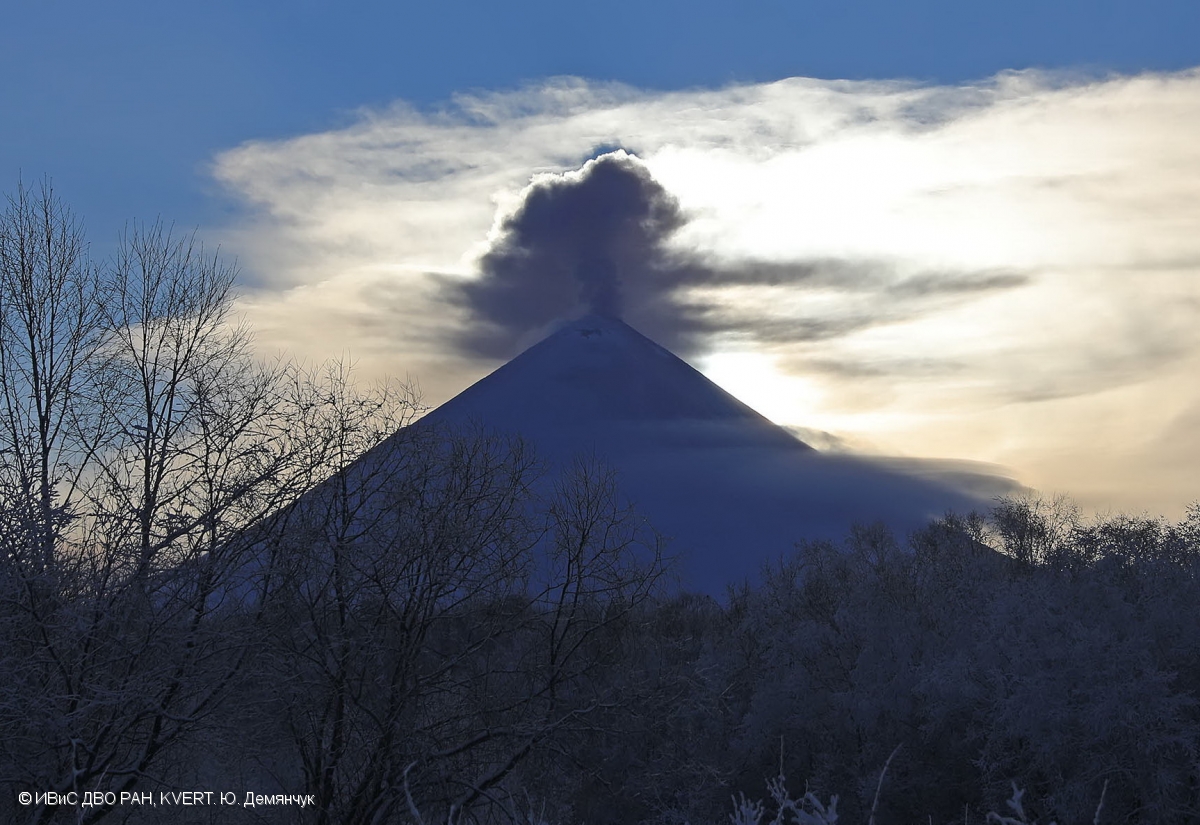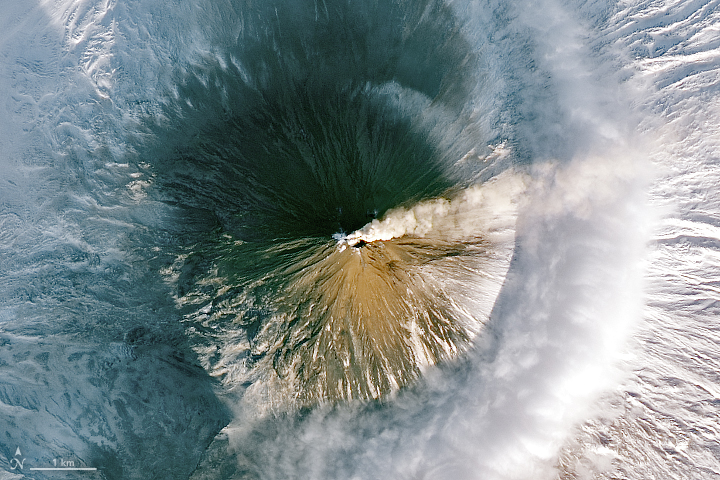Report on Klyuchevskoy (Russia) — May 2018
Bulletin of the Global Volcanism Network, vol. 43, no. 5 (May 2018)
Managing Editor: Edward Venzke.
Research and preparation by Sara Arav-Piper.
Klyuchevskoy (Russia) Intermittent moderate gas, steam, and ash plumes during December 2017-February 2018
Please cite this report as:
Global Volcanism Program, 2018. Report on Klyuchevskoy (Russia) (Venzke, E., ed.). Bulletin of the Global Volcanism Network, 43:5. Smithsonian Institution. https://doi.org/10.5479/si.GVP.BGVN201805-300260
Klyuchevskoy
Russia
56.056°N, 160.642°E; summit elev. 4754 m
All times are local (unless otherwise noted)
Klyuchevskoy has been active for many decades, alternating between eruptive and less active periods. Historical eruptions have originated primarily from the summit crater, but have also included numerous major explosive and effusive eruptions from flank craters. The current eruptive period began in late August 2015. Lava effusion ended in early November 2016 but explosive activity continued to be observed through October 2017 (BGVN 42:11) and into mid-February 2018 as described below. The Kamchatkan Volcanic Eruption Response Team (KVERT) is responsible for monitoring, and is the primary source of information. The Aviation Color Code remained at Orange through April 2018.
Strong gas-and-steam activity was observed on 2-5 December 2017. Ash plumes rose to an altitude of 5.5 km and extended for about 180 km (figure 26). Emissions were reported at 2300 on 5 December 2017 with plumes extending 170 km E. Gas-and-steam and ash plumes extended for approximately 95 km to the E and SW on 7 and 13 December, respectively. On 16-19 December the gas-steam and ash plumes extended approximately 140 km E, and on 22-25 December they reached about 220 km E.
 |
Figure 26. Photo of Klyuchevskoy showing a gas-and-steam plume on 3 December 2017. Courtesy of Yu. Demyanchuk (IVS FEB RAS, KVERT). |
Moderate eruptive activity continued into January and February 2018. On 1, 3, and 4 January gas-and-steam plumes with ash extended approximately 150 km downwind. The plume extended to 160 km N, W, and E on 5, 6, and 8-10 January (figures 27 and 28). On 12 and 17-18 January, the plume extended to 120 km W and E. The Tokyo VAAC reported that on 18 February an ash plume rose to an altitude of 5.2 km and extended SW. No further reports of ash plumes were reported through April 2018.
 |
Figure 27. Gas-and-steam plume with minor ash content rising from Klyuchevskoy on 6 January 2018. Courtesy of Yu. Demyanchuk (IVS FEB RAS, KVERT). |
A weak thermal anomaly was detected over the volcano on 5, 6, 11, 16, and 22, December 2017; and on 3, 6, 8, 11, 12, 15 and 17 January 2018. The number of MIROVA thermal anomalies detected also increased in the first half of January 2018; most were low to slightly moderate in intensity.
Geological Summary. Klyuchevskoy is the highest and most active volcano on the Kamchatka Peninsula. Since its origin about 6,000 years ago, this symmetrical, basaltic stratovolcano has produced frequent moderate-volume explosive and effusive eruptions without major periods of inactivity. It rises above a saddle NE of Kamen volcano and lies SE of the broad Ushkovsky massif. More than 100 flank eruptions have occurred during approximately the past 3,000 years, with most lateral craters and cones occurring along radial fissures between the unconfined NE-to-SE flanks of the conical volcano between 500 and 3,600 m elevation. Eruptions recorded since the late 17th century have resulted in frequent changes to the morphology of the 700-m-wide summit crater. These eruptions over the past 400 years have originated primarily from the summit crater, but have also included numerous major explosive and effusive eruptions from flank craters.
Information Contacts: Kamchatka Volcanic Eruptions Response Team (KVERT), Far Eastern Branch, Russian Academy of Sciences, 9 Piip Blvd., Petropavlovsk-Kamchatsky, 683006, Russia (URL: http://www.kscnet.ru/ivs/kvert/); Institute of Volcanology and Seismology, Far Eastern Branch, Russian Academy of Sciences (IVS FEB RAS), 9 Piip Blvd., Petropavlovsk-Kamchatsky 683006, Russia (URL: http://www.kscnet.ru/ivs/eng/); MIROVA (Middle InfraRed Observation of Volcanic Activity), a collaborative project between the Universities of Turin and Florence (Italy) supported by the Centre for Volcanic Risk of the Italian Civil Protection Department (URL: http://www.mirovaweb.it/); NASA Earth Observatory, EOS Project Science Office, NASA Goddard Space Flight Center, Goddard, Maryland, USA (URL: http://earthobservatory.nasa.gov/); Tokyo Volcanic Ash Advisory Center (VAAC), 1-3-4 Otemachi, Chiyoda-ku, Tokyo, Japan (URL: http://ds.data.jma.go.jp/svd/vaac/data/).


